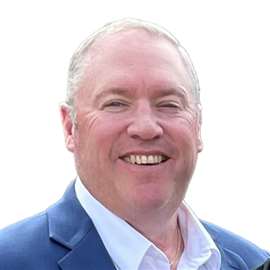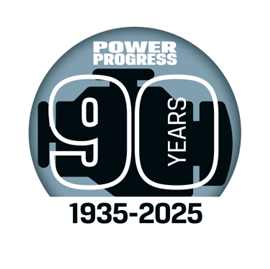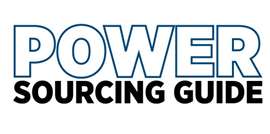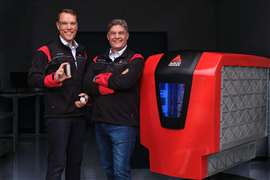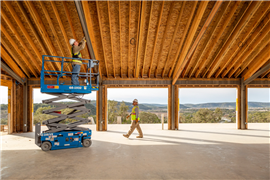Read this article in Français Deutsch Italiano Português Español
AEM panelists: shifting regulatory environment requires flexibility, global alignment
11 February 2025
There’s little doubt that the regulatory environment in part drives many of the choices OEMs make regarding their product portfolios. U.S. President Trump made it clear, both on the campaign trail and after assuming office, that federal regulations and the agencies responsible for their oversight would undergo dramatic changes during his administration.
At the AEM Annual Conference in November, held shortly after the U.S. presidential election, panelists discussing the current and future state of alternative power sources noted these expected regulatory changes and the challenges they will pose to OEMs.
Being Flexible
When asked how OEMs balance an uncertain but shifting regulatory environment with customer needs, Linda Hasenfratz, CEO of Canadian manufacturer Linamar Corporation, said flexibility was key.
“This is a massive technology evolution that many on- and off-highway industries are going down,” she said. “Not just electrification, but autonomy and different forms of mobility that may be not owning vehicles, but sharing vehicles, and all kinds of different modes that are happening.”
Hasenfratz added, “To me, our strategies need to be very flexible to manage that. You should directly correlate the level of uncertainty and amount of flexibility in your strategies and your people and your capabilities and your equipment to manage that.”
Linamar has taken this approach in its automotive business by developing a portfolio of products that addresses every type of vehicle propulsion, Hasenfratz said. “We picked products that had similar processing so that we could use the same equipment, regardless of whether we were making parts for internal combustion engines or hybrid vehicles or fuel cell vehicles or battery electric vehicles.”
She added that to the extent possible, OEMs should attempt vehicle designs in which different propulsion systems can be easily integrated into a single chassis. “Design it in as flexible a way as you can, because this is not going to be a smooth journey.”
Global Regulatory Challenges
ZQuip, a subsidiary Moog Construction, supplies modular electric power solutions to OEMs. Chris LaFleur, ZQuip’s managing director, said that the differences in environmental policies around the world — and even from state to state — pose a significant challenge for global companies.
“The frustrating part, no matter where you are, though, is there doesn’t seem to be an alignment of incentives for why this is happening,” he said.
LaFleur added that in locales where green policies seem to work better, particularly in Scandinavian countries, a holistic approach has been taken that leads to buy-in from all stakeholders.
“I think all of the policy and everything we see with OEMs and all the players, there’s so much waste in what’s happening because no one is working in lockstep with each other,” he said. “You can have flexibility and versatility while still having a unified vision. This presentation is about how important it is to have that goal of what you’re all working for. It just doesn’t seem like the off-highway industry has that.”
Doug Griffin, panel moderator and a partner in consulting firm The Context Network, highlighted the differences in environmental incentives among each of the U.S. states. Using California as an example, he asked the panel if more states could be expected to follow California’s lead.
Kelly Burgess, powertrain ecosystem manager for CNH, said he did not think so.
“When it comes to different incentives for different customers, it varies widely — state by state and sometimes city by city,” Burgess said. “California, obviously, with the Air Resources Board, they are pushing to get the products out there into the marketplace. They’re quite easy to work with at times. But other states — the programs are very hidden, and it’s very difficult to manage them, state by state.”
LaFleur agreed. “We all want this to work, and so it would be nice if the focus could be less on the end user — I’ll give you $5,000 to buy a machine — and more on the supply chain and the OEMs on the manufacturing side to make it worth it. Because it can work.”
Regarding incentives, Burgess added that when it comes to electric automobiles, the credit available to consumers to invest in the new technology is not so significant that it would be devastating if it was no longer available. Such is not the case with off-highway equipment.
“When we’re talking a quarter- or half-million-dollar piece of equipment, if you can’t guarantee that you can get the grant or you can get the incentive or the voucher, and you go to the dealer and they’re like, we’re not going to order it unless you commit to buying it, that whole process is really not working out too well,” he said.
POWER SOURCING GUIDE
The trusted reference and buyer’s guide for 83 years
The original “desktop search engine,” guiding nearly 10,000 users in more than 90 countries it is the primary reference for specifications and details on all the components that go into engine systems.
Visit Now
STAY CONNECTED




Receive the information you need when you need it through our world-leading magazines, newsletters and daily briefings.
CONNECT WITH THE TEAM



